We Are Image Makers: Yesterday, Today, and Tomorrow
Illustrators are indeed storytellers. Get a glimpse at some of the stories students have made and what inspires them.
The Celebration
Whatever your mode of celebration, there is a lot to cheer for: The passing of 2020. The passing of 2021. The emergence of new possibilities in 2022. Celebrations soothe our spirits. They bring connection and remind us of the steadfastness of our human spirit. With that in mind, perhaps we can take a moment to celebrate those students brave enough to explore their passions within the diverse and open world of illustration. We can take another moment to celebrate faculty not only for winning awards or harboring a healthy dose of necessary cynicism about the world in which we find ourselves but also for listening with encouragement to the needs of their students.
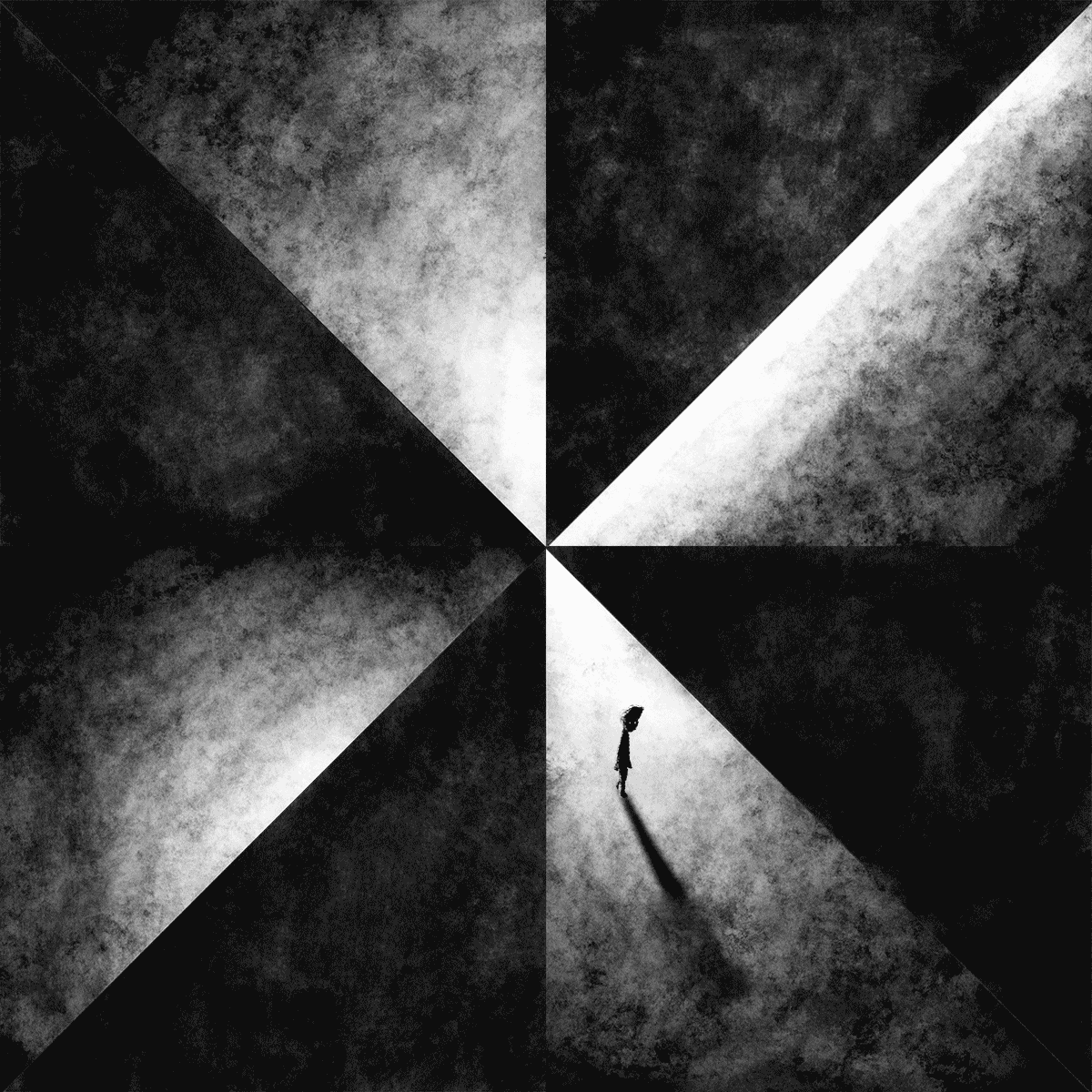
Geonjoo Shin, Taking a Walk, 2020. Courtesy the artist.
This celebration need not happen in a group or big setting. There is the option to choose a more quiet, solo celebration—a reflection of sorts. As you take in the images storied by students, celebrate the youthfulness and diversity in them: Celebrate the identities. The expansiveness. The inclusiveness. The socio-political and the decorative. Celebrate the art for art's sake: the traditional methods as well as the possibilities enabled by technology. Celebrate the stories and the voices. There will be time for critique. There always is. For now, celebrate the image makers and whatever it is that they are communicating to us.
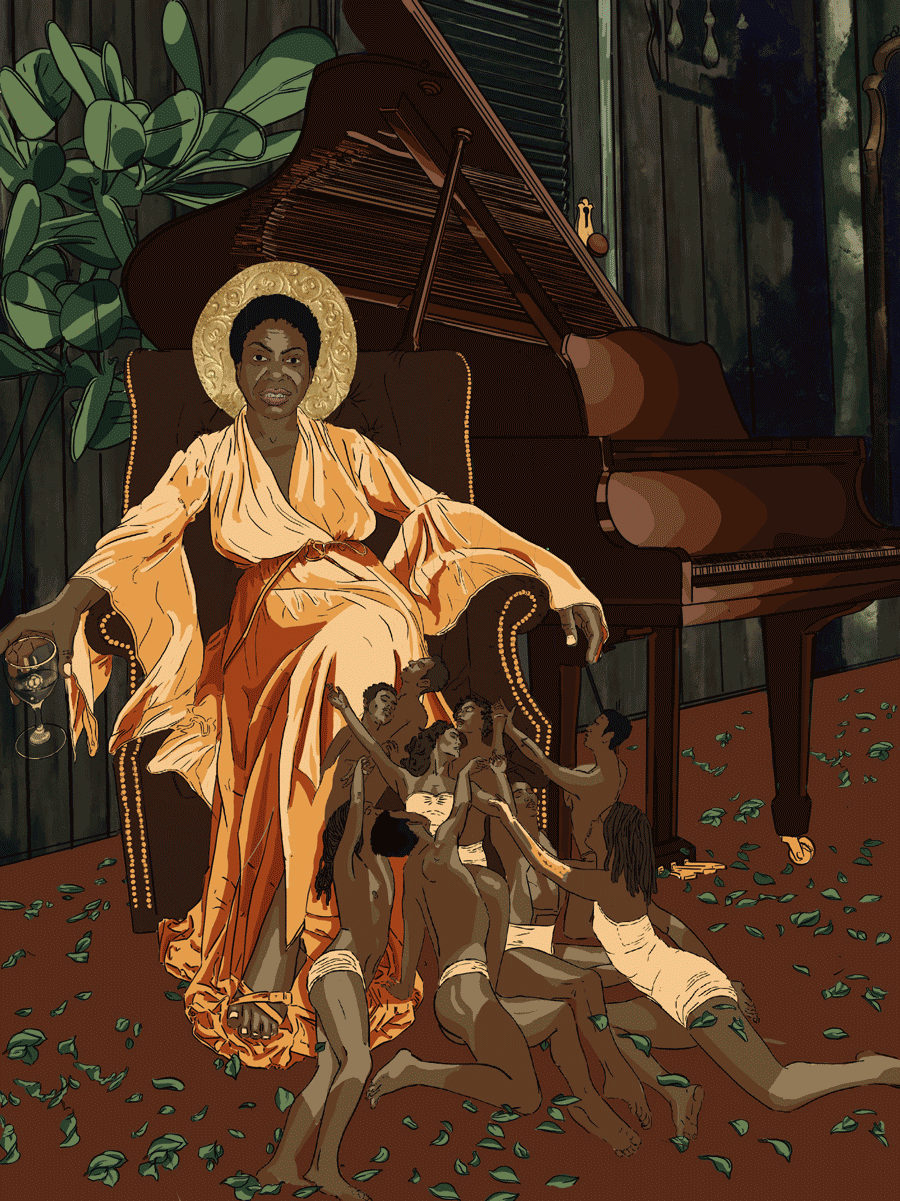
Bueli N’jheri, Nina, 2020. Courtesy of the artist.
An Illustration Thesis
Just before attending The Party, the American Illustration-American Photography's (AI-AP) own celebration of the best in contemporary illustration and photography, CCA Chair of Illustration Owen Smith and Assistant Chair Michael Wertz expressed the importance of storytelling for students. Central to an undergraduate education in Illustration at CCA is the proposition that the illustrator is “no less a storyteller than the writer or filmmaker,” says Smith. “It’s really about the idea and story,” he continues. In other words, the art and craft of visual communication relies on story. After all, stories move the world; and images, when combined with story, have the power to “broaden impact and effect change,” adds Wertz. Smith also takes a moment to assert that while it's one thing to simply offer services—be a hired hand per se—it's something entirely different to challenge the status quo and own the role of image maker, of storyteller.
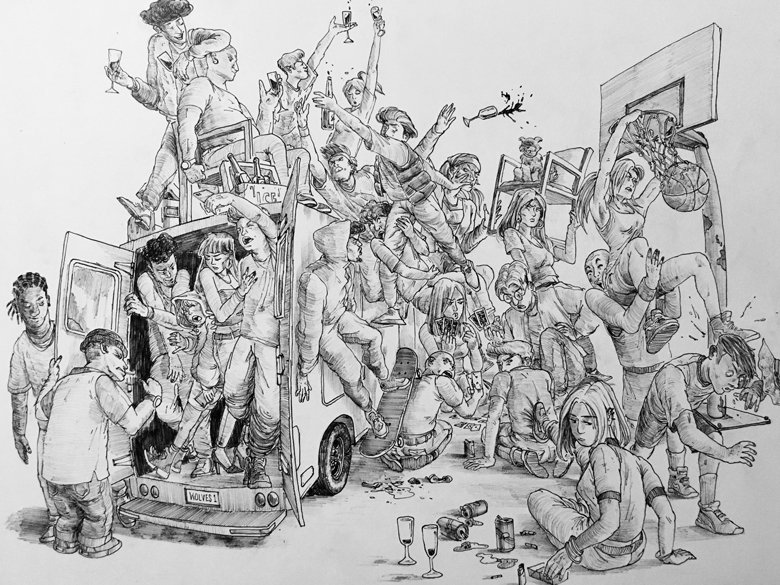
Michael Kang, Pack of Wolves, 2021. Courtesy of the artist.
Blurry Categories
It’s widely understood that illustrators blur lines and boundaries and that their avenues for work and ongoing practice are as vast as the stories they tell us. Smith and Wertz both acknowledge the shift from mostly traditional publishing, namely books and editorial, to spaces like online media and public art. Students also explore mediums like wallpaper, packaging, and action figures. It wouldn’t be uncommon to also find an illustrator working in “sculpture, spatial, and object-oriented” venues, says Smith. While many students hold a special affection for comics and graphic novels, they are also increasingly interested in the “entertainment world” and doing “visual development and concept art for film, animation, and games,” Smith elaborates. He’s not opposed to any of that. In fact, he says, “let’s do gaming but let’s do a new version of it.”
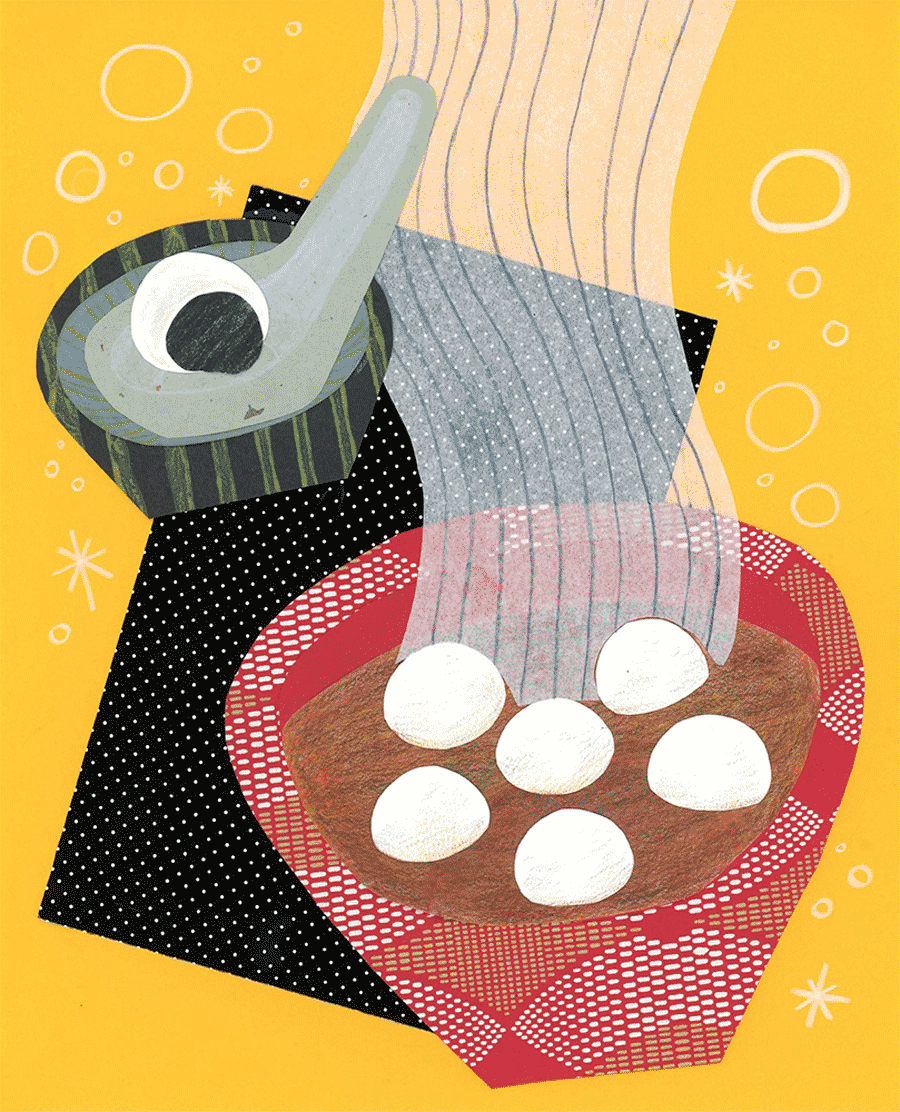
Jane Trieu, Tang Yuan, 2020. Courtesy of the artist.
Wertz is careful to add that the Illustration program emphasizes that students bring their “personal voices” to the work and that this voice should often be “source material for all kinds of work.” From social justice issues to gender equality and LGBTQ issues, some students leverage their time in the program to “validate their stories and personal experiences,” while others use visual narratives to “put a smile on someone’s face,” says Wertz. He confers that if students are able to make the personal the basis of their work, no one else can really tell their story. Furthermore, Smith adds, images can empower underrepresented voices and “initiate dialogue and foster change.” You can see this in much of the work and experimentation reflected here. The personal has a way of becoming political, which Wertz doesn’t shy away from, and that bodes well for those students who are similarly inclined.
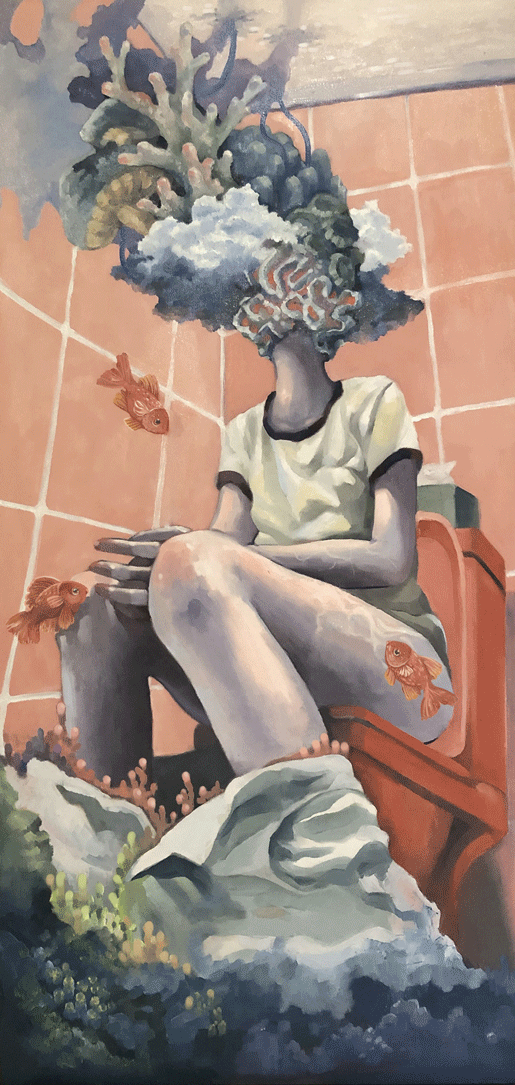
Chiehyu Yeh, Deep, 2021. Courtesy of the artist.
Curiosity and Inspiration
While the program chairs have been prolific illustrators in their professional lives, they do speak highly of the students who have chosen to test the waters of Illustration at CCA. In speaking with the chairs, it became quickly apparent that these students, current and alumni alike, are continually enveloped by what might be called a Bay Area education. Wertz calls it the “fierce individualism of the Bay Area,” adding that students are inspired by the people of San Francisco and by the richness of the culture that can be found in the city’s Mission District. It is his hope that students get curious enough to take full advantage of this opportunity and really “get to know their neighbors.” But inspiration doesn’t end there. Students are also inspired by manga, Studio Ghibli, and Pixar. For others, inspiration is truly drawn from their very identities, or lack thereof, in the world of image making. Still, they’re all fairly inspired by technology.
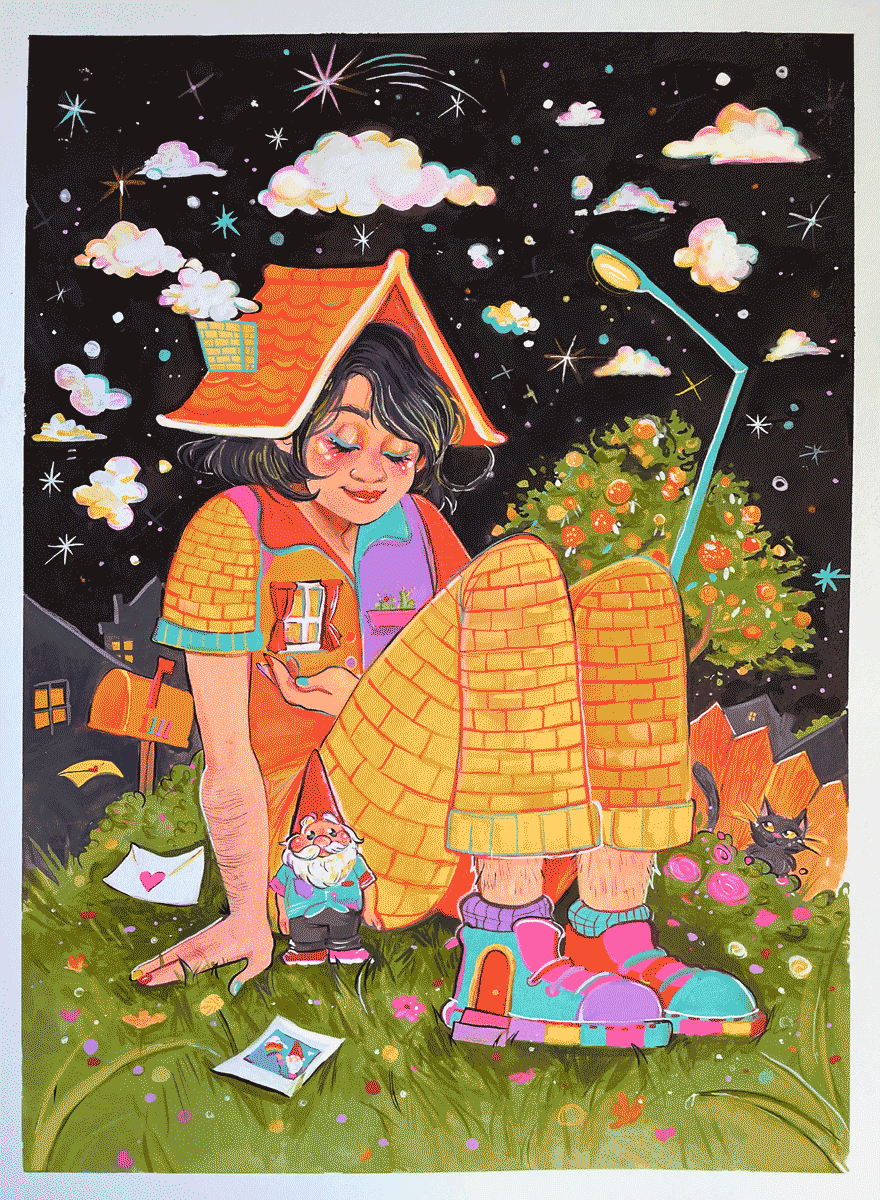
Valerie Liu, Valerie Liu is Amazing, 2021. Courtesy of the artist.
Technological Connections
Today, art students have a lot of digital tools at their disposal, but the foundations of analog are still very much valued within the Illustration program. Wertz recounts a rather animated story of a designer moving from station to station, from sketching to scanning to printing, and you can imagine the imagery of continually moving from these analog to digital stations and vice versa. Students are really encouraged to use their sketchbooks as a starting point and are advised to keep everything. Wertz will tell you: “Don’t throw anything away!” and “The best digital work comes from analog work.” Perhaps this explains a smidgen of the giddy infatuation that many students have with the Risograph. In any case, Smith concludes that “visual communication is the point, however you get there,” and that while “technology helps us connect, it's really about the idea and the story.” Obviously, he knows all too well that “there’s just something about that hand and paper connection.”
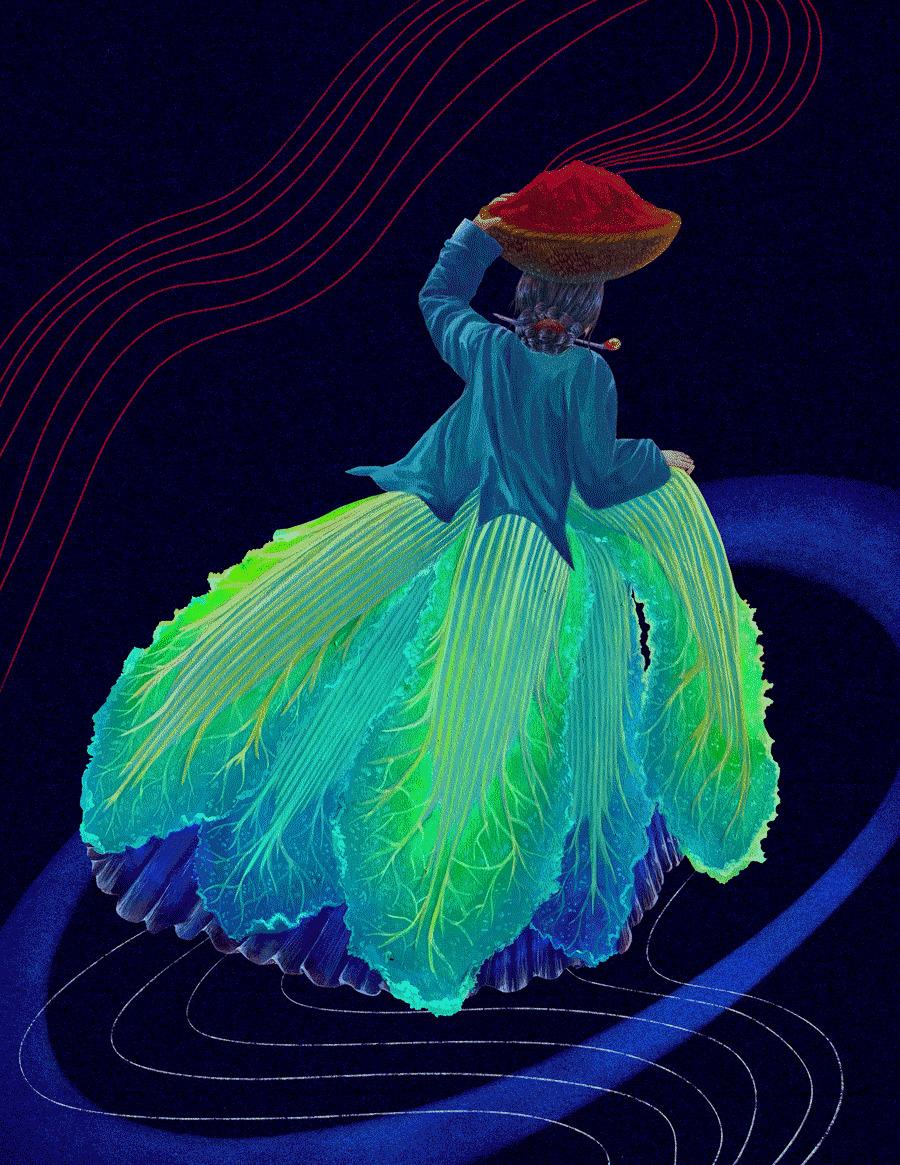
Da Bean (Joyce) Yu, Cabbage Woman, 2021. Courtesy of the artist.
A Beautiful Challenge
Illustrators are design practitioners, and like many designers, today’s students of illustration are being asked to consider the broader implications of their imagery. Imagemaking is indeed storytelling and the stories we tell, much like the images we bring to the surface, are infused with the possibility to ignite the full spectrum of human emotion—from joy and love to anger and grief; from awe and delight to apprehension and fear; and from melancholy and apathy to excitement and optimism. The students featured here grasp this and hold it all closely. But their work also bears the innocence of lightness, warmth, and the purity of playfulness. The world needs both/and. Illustrators are image makers. They always have been, and foresight says they always will be.
— Sasha Charlemagne
December 9, 2021